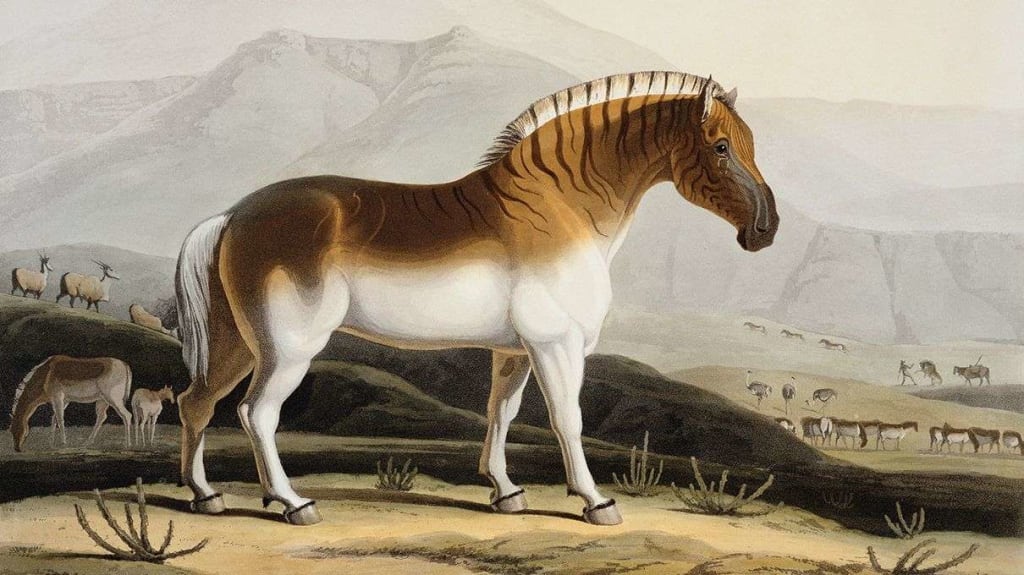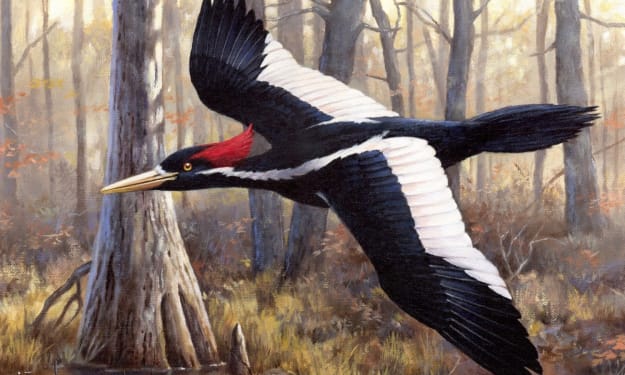10 Animals That Were the Last of Their Kind
From the last-living thylacine to a tortoise known as Lonely George, we're going to look at the now-extinct animals that were the last of their kind.

It's never easy being the only one of your kind. Whether it's the only girl in a group of guys, the only person of your nationality in your group of friends, or the only person of your type at work, it'll always be a bit lonely when you're the "only one."
Lonely as it is, it could be worse. Imagine if you were the last of your species! Imagine never seeing another creature that looked like you, talked like you, or ate the same food you did. Imagine never finding a partner because there are no other people alive.
That's the kind of lives that the last members of a species will live through, and we have to imagine it's pretty brutal. It happened to dinosaurs, sure, but humanity has seen its fair share of species join the category of extinct animals in its lifetime.
Wildlife goes extinct on our planet every day. This isn't new; humans are largely responsible for several species' extinction over the years (just take a look at this cold-blooded mammal humans drove to extinction if you don't believe me). In fact, some people believe that mass extinction is imminent. So, a shocking amount of animals will end up being the last of their species.
Over the years, many of these "last of their kinds" have been placed in captivity and watched while scientists struggled to find any other examples of the species. They have been affectionately called "endlings" by many who have studied them. Here are some of their tales.
You can't talk about animals that were the last of their kind without talking about Lonesome George, the most famous example of all. George was the last Pinta Island Tortoise, and he lived a very, very long and lonely life.
As the last member of his species, he was discovered by a group of scientists in 1972 on the Galapagos Islands. His habitat had become destroyed by wild goats and humanity, both of which took part in destroying all the vegetation his species lived on.
That left only George. Scientists tried to get his species to survive by crossbreeding him with female turtles of a similar species. Sadly, that effort proved to be ineffective.
A typical member of this species lived for 150 years. When Lonesome George died, both workers and zoologists everywhere felt their hearts break.
If you're a casual zoologist, then you already know that whales talk to each other using low frequency whale calls. These calls are so loud, they can be heard throughout the Earth. Whales of the same species tend to use similar frequencies, so they can find mates.
Then, there's 52.
Named after his call, 52 is the only whale to have a (relatively) high-pitched 52-hertz call in the world. It's a call that sounds similar to the lowest note on a standard tuba. And, scientists have heard it for years, desperately seeking a mate that will never answer.
No one has ever seen 52 alive, but they've heard the distinct call for decades. Due to it never being seen, it's difficult to figure out whether the whale is the last of its kind or just a very deformed whale.
The Passenger Pigeon has become one of the most notoriously extinct pigeon species in the world, and part of the reason for that notoriety is due to how commonplace they once were. These pigeons literally swarmed North America and made up 40 percent of all birds on the continent.
However, people hated these pigeons with a passion. They were considered a huge nuisance thanks to their taste for commercial crops and the fact that their swarms were so large, their droppings would often come down like snowfall. It used to be that you could grab a gun and shoot straight into the air, knowing you'd kill a pigeon and have food for dinner.
Hunting definitely brought down their numbers, but it was the actual nuisance they posed that drove them to extinction. Once efforts were made to eliminate them by the US government, they vanished from the wild and remained only in captivity.
By 1914, only one pigeon remained. Her name was Martha, and when she died, the species went with her. 100 years prior, anyone who would have said that Martha would be among the sad club of animals that were the last of their kind would have been called mad.
Hawaii's flora and fauna have both seen drastic changes since modern times, which led to many extinctions on this beautiful island paradise. Among them were several species of O'o birds, including the Kauai O'o.
This bird was known for its ethereal-sounding cry, and was at one point, quite common in Hawaii. However, the introduction of non-native predators like cats and rats threatened its existence—as did a serious bout of mosquito-carried disease.
By 1982, scientists were only able to find one pair of these lonely animals that were the last of their kind. People hoped the two would mate. Then, Hurricane Iwa hit, killing off the female. The last Kauai O'o call was heard, from a lonesome male who will never find his mate.
Tasmanian Tigers were pretty terrifying marsupials that were the size of a large dog. These wolf-like creatures were known for three things: their insatiable appetite, their vicious demeanor, and for having a massive, powerful jaw that could open up to 120 degrees wide.
While they were around, most people didn't want to be anywhere near them. Who would want to? They were insanely predatory. Those who were near them killed them out of fear of what they would do to local livestock and pets.
Much regret came from the death of the Tasmanian Tiger, especially when it came to Benjamin. Benjamin was the last known living Tasmanian Tiger in the world, and a video has surfaced of him pacing around in a zoo cage.
According to reports, the zoo staff actually didn't care for him. So, they let him die of neglect. Good going, guys.
Heath Hens were another species that many Americans enjoyed eating during the earlier years of our country's existence. These chicken-like birds were very common in the New England region, and were even considered "poor man's food" due to their commonplace existence.
Believe it or not, these animals really didn't have much to do with humanity when it came to extinction. An increase in natural predation, several massive forest fires, bitter cold winters, and a massive disease wiped them out.
Conservationists actually did try to save them by mating the animals that were the last of their kind. Unfortunately, all the females died. So, all the males did was perform mate attraction rituals to females that weren't there.
One by one, the last Heath Hens died. The only one that was left was found strutting around Martha's Vineyard in the 1930s, and was nicknamed "Booming Ben" for his very loud call.
Believe it or not, North America once had a very large population of parrots. The Carolina Parakeet was one such bird. Known for living in the Southern parts of the states, the Carolina Parakeet had green and yellow markings with a fiery red hue on the top of its head.
When settlers came in, these birds were considered to be a nuisance. They gained a taste for farmers' crops, as well as a specific type of berry. When these parakeets would eat the berry, their remains would become poisonous. So, not only did they wreck crops, but they also would kill local cats and dogs that ate them.
Extermination attempts were made, and sadly, they were successful. This was fairly easy since the birds weren't afraid of guns and would regularly return to areas where farmers had already shot at them.
Nothing quite says "extinct species" like the dodo bird. These were massively large, flightless birds that lived on the island of Mauritius. For centuries, these overgrown pigeons enjoyed life without any real predators—and that was their downfall.
When humans came to the island in the 16th century, they started to shoot the dodos as a quick and easy source of food. (For the record, dodo meat allegedly tasted foul, as did the eggs.)
It's often said that dodos were stupid, but this wasn't the truth. Dodos were curious and fearless. Dodos didn't flee because they didn't really ever have to fear anything before. Female dodos only lay one egg a season, and sailors were very likely to eat two to three a day.
Along with humans, ships brought over other predators like cats, rats, and dogs. They, too, seemed to have a taste for dodo meat and eggs. Dodos were just as easy to hunt for dogs as they were for people.
Sadly, between human predation and the new introduction of animals to the island, the dodo's days were numbered. It's presumed that the last dodo was sighted in 1681, when a sailor shot it for food.
It only took 80 years for a once plentiful bird to become dead as a dodo; but the good news is, scientists are taking steps to make this one of the species that may return from extinction.
The Quagga Zebra was one of the first species of zebra to go extinct, and was known for two things: its distinct partially-striped coat, and its bizarre "quagga" call. The zebra found its home in what is now called South Africa.
Overhunting was what killed this zebra off, and in classic Gilded Age form, the more endangered it was, the more people wanted to kill it. The last of their kind was found in a zoo in Amsterdam, where it died in 1883.
The only real evidence we have to the original Quagga is a photograph that was taken of it in 1870.
The Pyrenean Ibex was one of the most majestic wild goats to ever live in the Spanish Pyrenees mountains. These ibexes were known for having large horns and for their love of local crops. Due to their "pesty" nature, they were hunted to extinction as farmers encroached on their habitat.
By 2000, the entire population of Pyrenean ibexes had been whittled down to one lone endling—a female named Celia. She had died due to a fallen tree and never was able to find a mate. Scientists, though, made a point of trying to resurrect the species.
After multiple failed cloning attempts, one ibex was born. It survived for approximately five minutes before it, too, died of a lung defect. Since then, no other living Pyrenean ibexes have been seen alive.
About the Creator
Ossiana Tepfenhart
Ossiana Tepfenhart is a writer based out of New Jersey. This is her work account. She loves gifts and tips, so if you like something, tip her!






Comments
There are no comments for this story
Be the first to respond and start the conversation.